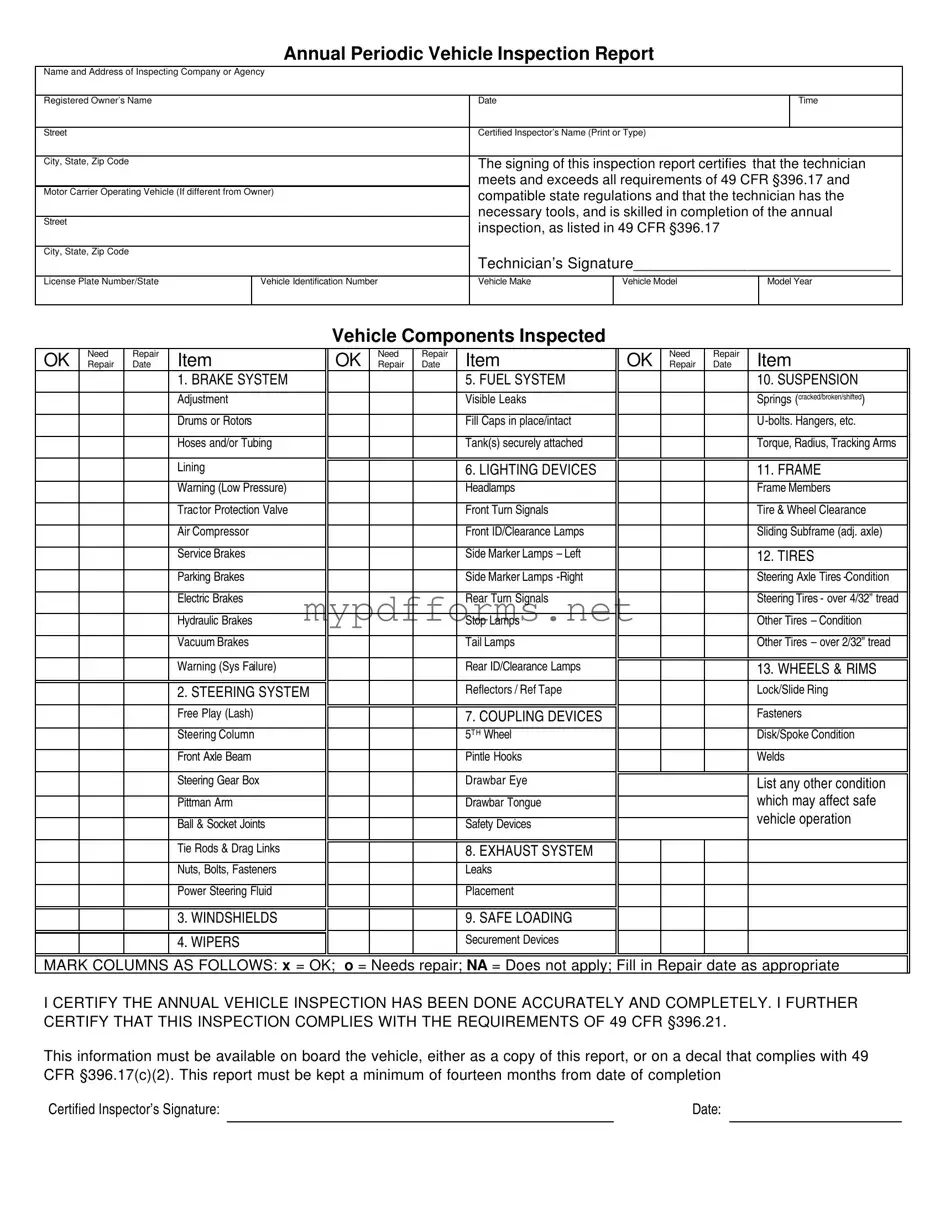Get Dot Vehicle Inspection Form in PDF
The DOT Vehicle Inspection form is a critical document used to certify that a vehicle has undergone a thorough inspection, ensuring it meets safety and operational standards. This report includes details such as the inspecting company's name, the registered owner's information, and a list of vehicle components that have been inspected. Completing this form accurately is essential for compliance with federal regulations and maintaining safe vehicle operation.
To fill out the DOT Vehicle Inspection form, please click the button below.
Modify Document Here
